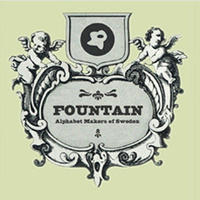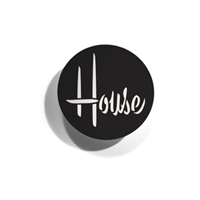
This is my feverish attempt to ScreenFonts before I switch to the September posters. Let's not waste any time and dive into the heart of the matter at once.
There's a lot of nice things happening in the marketing collaterals for last episode's Only God Forgives the design on the left lets the movie title set in Alternate Gothic glow like neon, but in a more irregular way. Together with the blueish reflection of the two male protagonists and Lindsay Lohan's casual dress and posture it lends the poster a slightly surreal, dreamlike quality.
Lindsay Lohan is the main attraction in the two other posters. The top one uses an image-within-the-image technique. It integrates a night shot of the illuminated Los Angeles skyline with a bokeh effect in the foreground into the high-contrast portrait of the former child model and teenage movie star. The resulting image is one of self-absorbed emotional detachment. Typographically speaking this one is a real bummer. Tahoma? I mean, come on, really!
The bottom one blends an overexposed portrait of Lohan with a shot of the typical palm trees in watered-down red, purple and pink hues. The oddly proportioned Futura-like sans with the high cross bar on the 'A' and heavy bottom on the 'S' is a mystery to me.
My preferred design is this excellent poster by Peter Stults. On his Behance page Peter explains that the concept was to explore the idea of the movie theater experience being a dying species. His goal was to promote The Canyons as a movie from a different era (or at least make it look like it was).
I went for a "poster within a poster" look and feel. Finding The Canyons poster on display on some urban wall in the mix of many other torn posters and fliers was the image in my head, and having [it] look like an old 70s minimal stylized poster (derived from Woody Allen's Manhattan poster and other similar ones from that time) was another goal.
The bodacious script is Callista by Vassil Kateliev. This fat cursive typeface is inspired by the work of French calligrapher, type designer and graphic designer François Boltana in the early 1970s – more specifically Stilla – and of famous Bulgarian type designer Milka Peykova in late 1970s. The supporting face is plain old Optima.
In high contrast with the rather pedestrian main poster, this illustrated design for the Oscilloscope comedy Breakup at a Wedding is once again a joyous, exuberant and colourful tour-de-force by Tom Hodge. As always the rising star of pulp movie design provides ample detailed information on his blog.
For his first non-genre comedy the challenge was to create something amusing by visualising some of the various "gags" and characters in order to sell the movie to the viewer. Tom decided to go for a montage, taking his cue from classic 80s comedy posters as they stand out as the most memorable to him – not just blocks of colour with actors' faces in them. He then proceeded to mix that with the more modern symmetrical poster design style as seen in the work of Tyler Stout and Randy Ortiz. As this is a wedding comedy Tom went all out on the visual references. Looking for a graphic device to hold all the characters together, the idea of a collapsing chapel seemed a perfect way to symbolise the storyline. This in turn enabled him to include the chapel window and wedding arch.
The use of colour is informed by a joke in the film about the choice of pink and brown for the decor. Tom wanted an explosion of pink to illustrate this – nothing says tacky wedding mistake than bright shocking pink. He added numerous little decorative elements like the crazy cupcake displays, used by the bridesmaids in a funny dance as they do look like breasts with chocolate nipples. The chocolate fountains at the top were included for the brother (the guy at the top right) is obsessed with them. The comedy was filmed in found-footage style, so the two camera guys documenting the whole thing frame the proceedings. Finally Tom wanted to display some of the carnage along the bottom with the introduction of the couple looking despairingly at a good old streaking, the emergency services being brought in, and of course the booze to round it all off.
Typographically speaking the poster plays it rather safe by using a extra bold sans serif – Jonathan Hill's Tondu Beta – to indicate it is a comedy, with an English script as a reference to the wedding theme. You will recognise Windsor Elongated in the tagline.
All style over content, these black-and-white character posters for Percy Jackson: Sea of Monsters look cool nonetheless. Each profile in chiaroscuro technique is overlaid by a transparent icon symbolising the deity and text in Paul Barnes' magnificent Dala Floda Italic in bright colours. It doesn't make much sense and the three superimposed layers create a little too much visual noise, but boy does that typeface look good. I don't mind pure eye candy occasionally.
Building upon the slick chromeographic logo for Cars, Pixar tries something similar for the unofficial sequel Planes. Unfortunately FB Eagle – while being a great geometric sans – is less convincing than the connected chrome script similar to Magneto used for Cars. Even more so because there even is a typeface inspired by an actual vintage air company available on the market. Flieger is a re-imagining of the old Pan Air Corporation logo, complete with alternate capitals with wings.

Given that Lovelace recounts the story of the tragic star of Deep Throat, I thought it would be interesting to first take a look at the original poster for reference. Belying its dubious status as the most profitable film of all-time – thank you Maffia – the film has a ridiculously poor poster in basic red and black on bright yellow. The stout round/square shapes of the mock-Bauhaus design Blippo somehow manage to evoke the appropriate seediness.
The movie poster for Inside Deep Throat, the 2005 documentary investigating the legacy of the provocative film, is far more sophisticated and well-designed. Typographically it pays tribute to the original with the very similar ITC Bauhaus.
Moving on to the new Lovelace film, the UK poster sustains the typographic motif, adding a glitzy disco flavour with a multilinear Bauhaus-inspired geometric face. The supporting typeface is House Industries' Chalet, a display sans assuming three subtly different identities – the Helvetica-like 1960 variant, the ITC Bauhaus-like 1970 variant used here, and the ITC Avant Garde Gothic-like 1980 variant.
Dispensing with the glamorous make-up and the luscious red lace bra makes the main poster a more accurate interpretation of the theme of the movie – it is not so much the scandalous story of the porn star, but an examination of the woman behind the mask. The alternative design on the right further simplifies the image and goes for a very strong conceptual approach. The raised legs can be interpreted as sexual submission, but also form an X, a reference to the rating of the movie. The elusive typeface used on both versions is a clear departure from the previous posters. The design sits somewhere between Globe Gothic and Castle.
Picture this: they make a documentary called Drew: The Man Behind the Poster about arguably the greatest movie poster artist ever (read those words carefully and let them simmer in your brain). And then the best they can come up with for the movie poster is this travesty!? What manner of photoshopped, David Hamilton'd, Gotham'd madness is this? Hold on, the fake folded corner is supposed to visualise… what? The "behind the poster" bit? Oh, how clevah! Of all the lame phoned-in literal interpretations… Besides, that's a friggin' cloudy sky behind the poster for crying out loud; the man is in front of the poster! Argh, get your static spatial adpositions in order! Now the IMPAwards website have their own theory: they say it would be pompous for Drew Struzan to do the artwork for his own documentary, and improper to get anyone else to do it. Well, I say poppycock! What part of "greatest movie poster artist ever" didn't they get?
Let. The man. Illustrate. His own poster. It's not rocket science!
Rats, this single paragraph made me exceed my exclamation marks quota, and the month has barely begun.
Thank goodness they did the right thing with this illustrated design which needs no further explanation. A glorious self-portrait, a signature, only the first name, no mucking around. Bam, this is how it's done.
Just to whet your appetite, here's the trailer with – how could it be any different? – Trajan in a starring role. No way am I going to miss it. And while we're at it, can I get the book for Christmas too?
Like it or not, Instagram has definitely set a new benchmark with its image filters, whose style inexorably permeate other areas of image creation. One of those typical Instagram-like colorations can be found in the movie poster for Ain't Them Bodies Saints. Personally I quite like this solution. A plain colour photo would have been too "news"-like (compare it with the French poster), while a black-and-white one would not "pop" enough. The multi-colour haze brings the right amount of consistency to the image, stylising it and making it stand out. It also creates distinct areas in the poster: the lighter yellow and orange focal point at the top draws the attention to the faces of the protagonists, while the darker aubergine renders the bottom part dark enough to make the knocked-out type perfectly legible. The movie title is a weathered combination of Bickham Script and a Trajan alternative – Hoefler & Frere-Jones' Requiem Text Small Caps.
I couldn't find any information on this painted poster. It intrigues me because the illustration gives it more the appearance of a book cover instead of a film poster, especially since the customary small type is missing. Leaving the unfinished borders is a nice touch, stressing that this is a painting.
Trying to encompass a whole film in a single poster image is hard to pull off without resorting to crazy composite collages like Tom Hodge's Breakup at a Wedding at the beginning of this post. This alternate poster for You're Next manages to do it successfully by turning the animal mask of the main assailant into the floor plan of a house. It shows the location of the victims in black hiding from their attackers in red. Sometimes a great concept, well executed is all you need. Even though I still have a soft spot for the typeface, there are so many great contemporary alternatives to ITC American Typewriter that would perform their duties equally well in this design. Look beyond the obvious choices, people! This one is 40 years old; time to use something fresh.
While the typography in the movie poster for The World's End on the right is pretty straightforward, the teaser poster on the left had me puzzled. The classic shapes of the serifs are a stylistic mismatch to the structure of the letters that seem similar to ITC Benguiat. Until I realised it simply is a customised Adobe Garamond made to look more Art Nouveau-like. Weird…
You can imagine that this typographic poster is like a red flag to a bull for me – I simply had to identify all the faces listing the stops on the pub crawl from the movie. I managed most of them and then received valuable assistance from Typophile's terrific Type Identification Board. The use of a different typeface for each pub suggests the designers wanted to create the impression that these were taken from the actual pub signs. While I applaud the idea, I have done the trip to Brighton along the coast a number of times now and observed the lettering on pubs, and I think the typefaces used in this poster do not always look authentic. But whatever, that's me nitpicking again.
From top to bottom, the inline serif face Hoefler Text Engraved for The First Post is a good choice, but the shaded inside shapes of The Old Familiar's Chevalier tell us it was really designed for print. I appreciate the use of the titling face Bembo Titling, not the text version, for The Famous Cock. Stencil faces like Le Corbusier for The Cross Hands make perfect sense for pub signs, as stencils allow easy application of large letters on surfaces. Ironically the roots of Gotham lie in New York architectural lettering, so The Good Companions metaphorically links it to its origins, albeit an Atlantic Ocean away. Although the typeface is based on a quintessentially British design, Mrs Eaves is a puzzling choice The Trusty Servant as it would feel completely out of place on on a pub sign. Elephant for The Two Headed Dog evokes wood type which makes sense. The Mermaid on the other hand would have been better served with a sign painter's script, not the copperplate script Snell Roundhand, and neither is Copperplate Gothic an acceptable choice for The Beehive, as they both firmly belong in the realm of printing. Andrade for The King's Head is too delicate and again a typical print face. Shango on the other hand looks like it could be derived from lettering engraved in stone, so that kind of works. Finally ITC Serif Gothic for The World's End itself looks so eighties it hurts.
The type on the movie poster for Drinking Buddies was made to look like a pub chalkboard. I originally thought it would have been genuine chalk lettering, but apparently the effect was achieved by the art director simply hand-tracing over Memphis and the casual brush sans Snyder Speed after it was set in Adobe Photoshop. I must say the end result is quite convincing.
You know by now I find brushed steel to signify speedy cars rather daft, yet the weathered texture as if the movie title was painted on concrete is even sillier. Agreed, those cars drive on asphalt, but these rough letters on the movie poster for Getaway give a very static impression. The rather condensed letter forms and insufficient slant of the distressed sans don't help neither.
It always strikes me that teaser posters often are more interesting than the final designs. They have the liberty of being sparse with what they communicate, and are specifically created to surprise or tease (well, duh!). This poster for I Declare War manages to give the viewer a whole lot of information with a very simple image. The toy weapons strapped together from sticks and stones tell you all you need to know about the movie. The old mainstay ITC Machine underlines the military theme, yet – just like with ITC American Typewriter – I would have preferred to see something new.
For no other reason than that it is again a beautiful design I am including this alternate poster by the great Jay Shaw. See, I really don't mind pure eye candy, occasionally.











